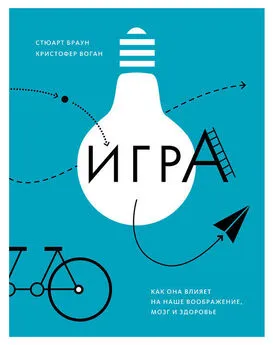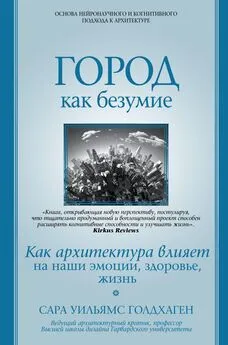Виктория Уильямсон - Мы – это музыка. Как музыка влияет на наш мозг, здоровье и жизнь в целом
- Название:Мы – это музыка. Как музыка влияет на наш мозг, здоровье и жизнь в целом
- Автор:
- Жанр:
- Издательство:Манн, Иванов и Фербер
- Год:2016
- Город:Москва
- ISBN:978-5-00057-660-1
- Рейтинг:
- Избранное:Добавить в избранное
-
Отзывы:
-
Ваша оценка:
Виктория Уильямсон - Мы – это музыка. Как музыка влияет на наш мозг, здоровье и жизнь в целом краткое содержание
Прочтение этой книги, возможно, даст идеи, как правильно применить силу музыки в ваших обстоятельствах.
Эта книга будет интересна в первую очередь тем, кто интересуется влиянием музыки на человеческую психику и физиологию.
На русском языке публикуется впервые.
Мы – это музыка. Как музыка влияет на наш мозг, здоровье и жизнь в целом - читать онлайн бесплатно полную версию (весь текст целиком)
Интервал:
Закладка:
176
Wong, E.C., Chan, A.H., Roy, A., and Margulis, E.H. (2011), ‘The bimusical brain is not two monomusical brains in one: evidence from musical affective processing’, Journal of Cognitive Neuroscience, 23 (12), 4082–4093.
177
http://www.guardian.co.uk/lifeandstyle/2012/oct/12/experience-head-injury-musical-prodigy?INTCMP=SRCH.
178
Marcus, G. (2011), Guitar Zero: The new musician and the science of learning. New York: Penguin Press.
179
Mithen, S.J. (2005), The Singing Neanderthals: the Origins of Music, Language, Mind and Body. Cambridge, Massachusetts: Harvard University Press.
180
Mithen, S., and Parsons, L. (2008), ‘The Brain as a Cultural Artefact’, Cambridge Archaeological Journal, 18 (3), 415–422.
181
Zatorre, R.J., Delhommeau, K., and Zarate, J.M. (2012), ‘Modulation of auditory cortex response to pitch variation following training with microtonal melodies’, Frontiers in Psychology, 3, 544. Lappe, C., Trainor, L.J., Herholz, S.C., and Pantev, C. (2011), ‘Cortical Plasticity Induced by Short-Term Multimodal Musical Rhythm Training’, PLOS ONE, 6 (6): e21493.
182
Herholz, S.C., and Zatorre, R.J. (2012), ‘Musical Training as a Framework for Brain Plasticity: Behavior, Function, and Structure’, Neuron, 76 (3), 486–502.
183
Моя коллега и подруга Аннели Берониус Хааке много лет изучает музыку и работу, и я благодарю ее за вдохновение, во многом определившее первую часть этой главы.
184
Antrim, D.K. (1943), ‘Music in industry’, The Musical Quarterly, XXIX (3), 275–290. Kirkpatrick, E.H. (1943), ‘Music Takes the Mind Away’, Personnel Journal, 22, 225–228.
185
Wyatt, S., and Langdon, J.N. (1937), ‘Fatigue and boredom in repetitive work’, Industrial Health Research Board report No. 77. London: Her Majesty’s Stationery Office.
186
Fox, J.G., and Embrey, E.D. (1972), ‘Music – an aid to productivity’, Applied Ergonomics, 3 (4), 202–205. Newman Jr, R.I, Hunt, D.L., and Rhodes, F. (1966), ‘Effect of music on employee attitude and productivity in a skateboard factory’, Journal of Applied Psychology, 50 (6), 493–496.
187
Uhrbrock, R.S. (1961), ‘Music on the job: its influence on worker morale and production’, Personnel Psychology, 14 (1), 9–38.
188
Smith, W.A.S. (1961), ‘Effects of industrial music in a work situation requiring complex mental activity’, Psychological Reports, 8, 159–162.
189
Oldham, G.R., et al. (1995), ‘Listen while you work? Quasi-experimental relations between personal-stereo headset use and employee work response’, Journal of Applied Psychology, 80 (5), 547–564.
190
Lesiuk, T. (2005), ‘The effect of music listening on work performance’, Psychology of Music, 33 (2), 173–191.
191
Haake, A.B. (2011), ‘Individual music listening in workplace settings: an exploratory survey of offices in the UK’, Musicae Scientiae, 15 (1), 107–129.
192
Kämpfe, J., Sedlmeier, P., and Renkewitz, F. (2010), ‘The impact of background music on adult listeners: A meta-analysis’, Psychology of Music, 39 (4), 424–448.
193
Berlyne, D.E. (1971), Aesthetics and psychobiology. New York: Meredith. Kahneman, D. (1973), ‘Arousal and attention’, in D. Kahneman (ed.), Attention and effort (pp. 28–49). Englewood Cliffs, NJ: Prentice Hall. Yerkes, R.M., and Dodson, J.D. (1908), ‘The relation of strength of stimulus to rapidity of habit-formation’, Journal of Comparative Neurology and Psychology, 18 (5), 459–482.
194
Thompson, W.F., Schellenberg, E.G., and Letnic, A.K. (2012), ‘Fast and loud music disrupts reading comprehension’, Psychology of Music, 40, 698–706.
195
Csikszentmihalyi, M. (1990), Flow: The Psychology of Optimal Experience. New York: Harper & Row.
196
Thompson, W.F., Schellenberg, E.G., and Husain, G. (2001), ‘Mood, arousal, and the Mozart effect’, Psychological Science, 12 (3), 248–251.
197
Furnham, A., and Bradley, A. (1997), ‘Music While You Work: The Differential Distraction of Background Music on the Cognitive Test Performance of Introverts and Extraverts’, Applied Cognitive Psychology, 11 (5), 445–455.
198
Eysenck, H. (1967), The biological basis of personality. Springfield, IL: Thomas.
199
Cassidy, G., and MacDonald, R.A.R. (2007), ‘The effect of background music and background noise on the task performance of introverts and extraverts’, Psychology of Music, 35 (3), 517–537.
200
Chamorro-Premuzic, T., and Furnham, A. (2007), ‘Personality and music: Can traits explain how people use music in everyday life?’, Journal of British Psychology, 98 (2), 175–185.
201
Martí Pérez, J. (1997), ‘When music becomes noise: Sound and music that people in Barcelona hear but don’t want to listen to’, World of Music, 39 (2), 9–17.
202
Parente, J.A. (1976), ‘Musical preference as a factor of music distraction’, Perceptual and Motor Skills, 43, 337–338.
203
Greasley, A.E. (2008), ‘Engagement with music in everyday life: An in-depth study of adults’ musical preferences and listening behaviours’ (Unpublished doctoral thesis, Keele University, Stoke-on-Trent, UK).
204
Cassidy G.G., and MacDonald, R.A.R. (2010), ‘The effects of music on time perception and performance of a driving game’, Scandinavian Journal of Psychology, 51 (6), 455–464.
205
Hartley, L.R., and Williams, T. (1977), ‘Steady state noise and music and vigilance’, Ergonomics, 20 (3), 277–285.
206
Oakes, S., and North, A.C. (2006), ‘The impact of background musical tempo and timbre congruity upon ad content recall and affective response’, Applied Cognitive Psychology, 20 (4), 505–520.
207
Ransdell, S.E., and Gilroy, L. (2001), ‘The effects of background music on word processed writing’, Computers in Human Behavior, 17 (2), 141–148.
208
Kämpfe, J., Sedlmeier, P., and Renkewitz, F. (2011), ‘The impact of background music on adult listeners: A meta-analysis’, Psychology of Music, 39 (4), 424–448.
209
Lanza, J. (1994), Elevator music: A surreal history of Muzak, easy-listening and other moodsong. New York: St Martin’s Press.
210
Frith, S. (2002), ‘Music and everyday life’, Critical Quarterly, 44 (1), 35–48.
211
Wearden, J.H., and Penton-Voak, I.S. (1995), ‘Feeling the heat: body temperature and the rate of subjective time, revisited’, Quarterly Journal of Experimental Psychology, 48 (2), 129–41.
212
Hammond, C. (2012), Time warped. Edinburgh: Canongate Books Ltd.
213
Yalch, R.F., and Spangenberg, E.R. (2000), ‘The effects of music in a retail setting on real and perceived shopping times’, Journal of Business Research, 42 (2), 139–147.
214
Yalch, R.F., and Spangenberg, E. R. (1990), ‘Effects of store music on shopping behavior’, Journal of Consumer Marketing, 7 (2), 55–63.
215
Kellaris, J.J., and Kent, R.J. (1992), ‘The influence of music on consumers’ temporal perceptions: Does time fly when you’re having fun?’, Journal of Consumer Psychology , 1 (4), 365–376.
216
North, A.C, and Hargreaves, D.J. (2008), The social and applied psychology of music. Oxford: Oxford University Press.
217
Smith, E.C., and Curnow, R. (1966), “Arousal Hypothesis” and the Effects of Music on Purchase Behavior’, Journal of Applied Psychology , 50, 255–256.
218
Milliman, R.E. (1982), ‘Using Background Music to Affect Behavior of Supermarket Shoppers’, Journal of Marketing, 46 (Summer), 86–91.
219
Caldwell, C., and Hibbert, S.A. (1999), ‘Play That One Again: The effect of music tempo on consumer behaviour in a Restaurant’, in European Advances in Consumer Research , Volume 4 (eds. Bernard Dubois, Tina M. Lowrey, L.J. Shrum, and Marc Vanhuele), pp. 58–62.
220
Guêguen, N., Jacob, C., Lourle, M., and Le Guellec, H. (2007), ‘Effect of background music on consumer’s behavior: A field experiment in an open-air market’, European Journal of Scientific Research, 16 (2), 268–272.
221
North, A.C., Hargreaves, D.J., and McKendrick, J. (1999), ‘Music and on-hold waiting time’, British Journal of Psychology, 90, 161–164.
222
Lai, C.-J., et al. (2011), ‘Effect of Background Music Tempo and Playing Method on Shopping Website Browsing’, Smart Innovation, Systems and Technologies, 10, 439–447.
223
Areni, C.S., and Kim, D. (1993), ‘The influence of background music on shopping behaviour: Classical versus Top Forty music in a wine store’, in Advances in Consumer Research , Volume 20 (eds. L. McAlister and M.L. Rothschild), pp. 336–340.
224
North, A.C., Shilcock, A., and Hargreaves, D.J. (2003), ‘The effect of musical style on restaurant customers’ spending’, Environment and Behavior , 35, 712–718.
225
Wilson, S. (2003), ‘The effect of music on perceived atmosphere and purchase intentions in a restaurant’, Psychology of Music , 31 (1), 93–112.
226
North, A.C., Hargreaves, D.J., and McKendrick, J. (1999), ‘The effect of music on instore wine selections’, Journal of Applied Psychology , 84 (2), 271–276.
227
Jacob, C., Guéguen, N., Boulbry, G., and Sami, S. (2009), ‘“Love is in the air“: congruence between background music and goods in a florist’, The International Review of Retail, Distribution and Consumer Research , 19 (1), 75–79.
228
MacInnis, D.J., and Park, C.W. (1991), ‘The Differential Role of Characteristics of Music on High– and Low-involvement Consumers’ Processing of Ads’, Journal of Consumer Research , 18, 161–173.
229
Oakes, S. (2007), ‘Evaluating Empirical Research into Music in Advertising: A Congruity Perspective’, Journal of Advertising Research , 47 (1), 38–50.
Читать дальшеИнтервал:
Закладка:


![Аре Бреан - Музыка и мозг [Как музыка влияет на эмоции, здоровье и интеллект]](/books/1068692/are-brean-muzyka-i-mozg-kak-muzyka-vliyaet-na-emoc.webp)


![Виктория Токарева - Тихая музыка за стеной [сборник]](/books/1102057/viktoriya-tokareva-tihaya-muzyka-za-stenoj-sbornik.webp)




